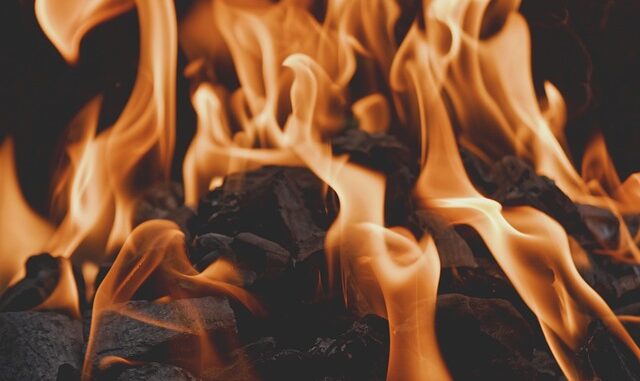
Summary
This article provides essential information for parents and caregivers on preventing and treating pediatric burn injuries related to campfires. It covers safety guidelines for campfire setup, proper adult supervision, and first-aid measures for burns. The article also emphasizes the importance of seeking professional medical care for moderate to severe burns.
TrueNAS: the healthcare storage solution thats secure, scalable, and surprisingly affordable.
** Main Story**
Campfires: the crackling heart of outdoor family fun. But let’s face it, they can also be a serious hazard, especially for curious kids. We all love roasting marshmallows and telling stories around the flames, so it’s crucial we take the right steps to ensure everyone stays safe and sound. Let’s dive into how to keep those little adventurers protected from campfire burns.
Creating a Campfire Safe Zone
First things first, location is key. You want to pick a spot far away from anything that could easily catch fire: think overhanging branches, dry leaves, tents. I remember one time camping with my family, we thought we were far enough from a tree, but a rogue ember floated over and landed right on a pile of dry pine needles! Luckily, we caught it in time. But it just goes to show, being extra cautious is always the best bet.
Make sure that fire pit has a proper enclosure – rocks or a metal ring work great. And always, always keep a bucket of water (or sand) and a shovel close by. That way, if things get out of hand, you’re ready to act fast. You can’t just assume everything will be alright, be prepared for anything.
Kids and Campfires: The Supervision Factor
Now, this might seem obvious, but it’s worth repeating: never, ever leave children unattended near a campfire. It only takes a split second for an accident to happen. Designate a responsible adult – or better yet, two – to keep a watchful eye on the kids at all times.
Create a ‘safety zone’ around the fire, at least three feet wide, and make sure the kids understand they can’t cross that line. Explain to them the dangers of fire in a way they can understand, but without scaring them. You could make it a game, like a ‘red light, green light’ using the safety zone as the boundary. Discourage running and roughhousing anywhere near the fire. It’s just not worth the risk, you know?
Uh Oh! First-Aid for Campfire Burns
Alright, let’s say, despite all precautions, a child gets burned. What do you do?
- Immediately, get them away from the heat source.
- Then, cool the burn with cool (not ice-cold) running water for 10-20 minutes. And I really mean cool, not freezing. Ice can actually cause more damage.
- Carefully remove any clothing or jewelry near the burn, but don’t try to pull anything off that’s stuck to the skin. That could tear the skin and make things worse.
How Bad is It? Assessing Burn Severity
After cooling the burn, it’s time to assess the damage. Here’s a quick guide:
- First-degree burns: These are superficial, affecting only the outer layer of skin. Think redness and pain. It’s like a sunburn, but from a campfire.
- Second-degree burns: These go deeper, causing blisters and intense pain. These ones are no fun, and definitely need attention.
- Third-degree burns: These damage all layers of skin and can appear white, charred, or leathery. Surprisingly, they might not be painful due to nerve damage. These are serious and require immediate medical help.
When to Seek Professional Help
For anything beyond a minor first-degree burn, it’s best to seek professional medical care. Second- and third-degree burns, especially those covering a large area or involving the face, hands, feet, or genitals, need immediate medical attention.
Also, keep an eye out for any signs of infection: increased pain, swelling, redness, or pus. If you see any of these, get to a doctor, pronto!
Protecting and Treating the Burn
After cooling and assessing the burn, cover it loosely with a sterile, non-stick dressing. This will help prevent infection and protect the delicate skin.
And please, resist the urge to apply ointments, butter, or home remedies. I know Grandma always said butter was the answer, but in this case, it can actually interfere with healing.
Over-the-counter pain relievers like ibuprofen or acetaminophen can help manage pain. But for more severe burns, a doctor might prescribe something stronger.
Long-Term Burn Care
For moderate to severe burns, follow-up care with a burn specialist is crucial. They’ll monitor healing, manage scarring, and provide any necessary rehabilitation.
Also, protect healed skin from the sun. It’s more susceptible to sunburn, so use sunscreen with an SPF of 30 or higher and cover the area with protective clothing. Scarring can be a long-term issue so, protect from the sun!
Final Safety Touches
When it’s time to put out the fire, pour water slowly and steadily over the embers until they are cool to the touch. Make sure those ashes are completely extinguished before you leave the campsite. You don’t want to be the reason for a forest fire, do you?
Store matches, lighters, and other fire-starting materials out of reach of children. And continue to educate kids about fire safety and the importance of respecting fire. Prevention is the best medicine, and a safe campfire experience starts with responsible planning and supervision. So, this information is current as of March 30, 2025, and, let’s be honest, some things never go out of style.


Be the first to comment